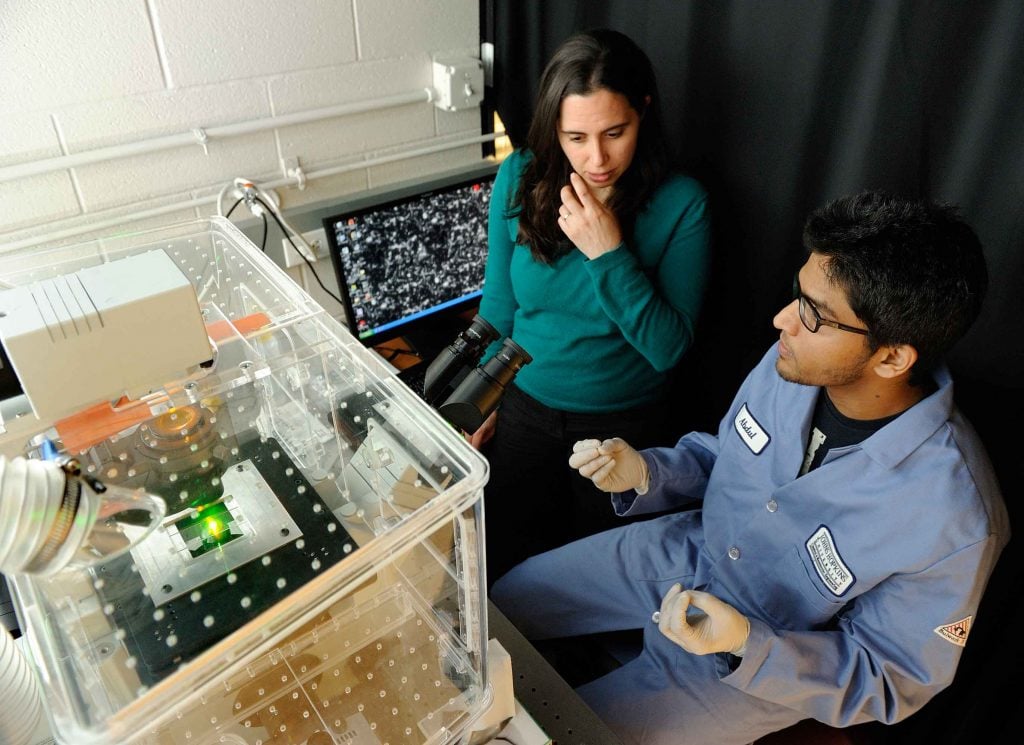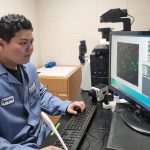DNA nanotubes self-assemble into molecular bridges between cells

In a microscopic feat that resembled a high-wire circus act, Johns Hopkins researchers have coaxed DNA nanotubes to assemble themselves into bridge-like structures arched between two molecular landmarks on the surface of a lab dish. This self-assembling bridge process, which may someday be used to connect electronic medical devices to living cells, was reported by the team recently in the journal Nature Nanotechnology.
The ability to assemble these bridges, the researchers say, suggests a new way to build medical devices that use wires, channels or other devices that could “plug in” to molecules on a cell’s surface. Such technologies could be used to understand nerve cell communication or to deliver therapeutics with unprecedented precision. Molecular bridge-building, the researchers said, is also a step toward building networked devices and “cities” at the nanoscale, enabling new components of a machine or factory to communicate with one another.
To describe this process, senior author Rebecca Schulman, an assistant professor of chemical and biomolecular engineering in the Whiting School of Engineering and an INBT affiliated faculty member, referred to a death-defying stunt shown in the movie “Man on Wire.” The film depicted Philippe Petit’s 1974 high-wire walk between the World Trade Center’s Twin Towers.
Schulman and postdoctoral fellow Abdul Mohammed used a single-molecule fluorescence microscope to track the nanotube bridge formation process. These building blocks attached themselves to separate molecular anchor posts, representing where the connecting bridge would begin and end. The segments formed two nanotube chains, each one extending away from its anchor post. Then, like spaghetti in a pot of boiling water, the lengthening nanotube chains wriggled about, exploring their surroundings in a random fashion. Eventually, this movement allowed the ends of the two separate nanotube strands to make contact with one another and snap together to form a single connecting bridge span. This process can be seen in this video, linked here. Read the entire Johns Hopkins press release here.
This story first appeared on January 6, 2017 by Mary Spiro on the INBT website.
Story by: INBT





